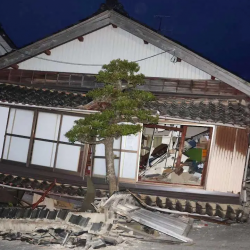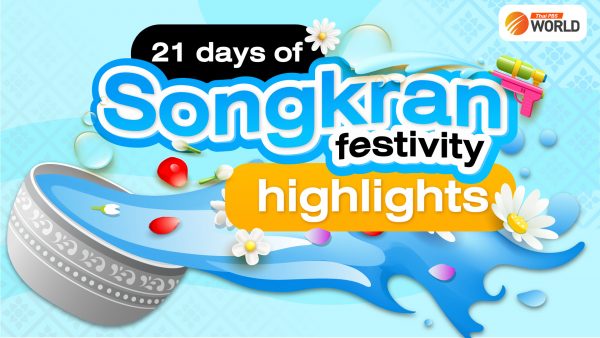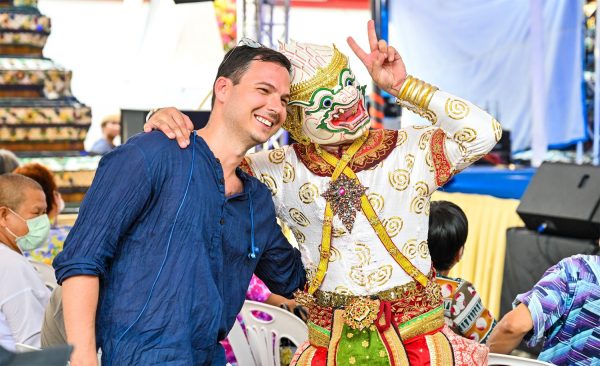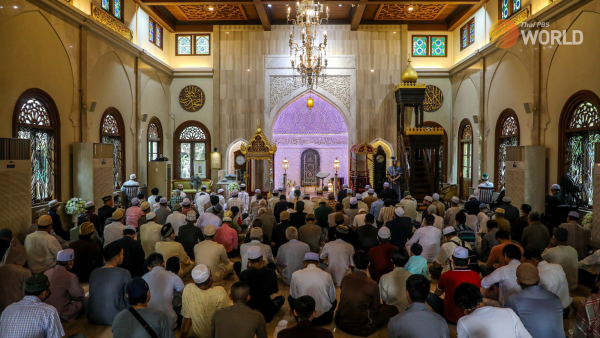Narathiwat, a dream destination blessed by nature

Narathiwat is the easternmost of the four provinces in Thailand’s deep south, bordered to the east by the Gulf of Thailand and to the south by Malaysia. The coastal province, which evolved from fishing communities along the mouth of the Pak Bara River, is now known for its cross-cultural beauty, abundant nature, and local delicacies.
A visit ideally begins with Wat Chon Thara Singhe, a Buddhist temple in Tak Bai that serves as a demarcation between Thailand and Malaysia. The historic temple takes you back to 1909, when the Kingdom of Siam returned four northern Malaysian provinces to the United Kingdom.
“Thailand should have gained more land beyond this temple when the Siamese and British were discussing the division,” a local driver and guide in Narathiwat says, as he drives a group of Thai visitors into Wat Chonthara Singhe.
“Back then, when the British called on the Siamese for a meeting in Kelantan forest, the Siamese couldn’t make it. They were very drunk and had passed out at this temple.”
You can guess the rest.

“The British demarcated the land where the Siamese were passed out as belonging to Siam, and what lay beyond that was under the protection of the United Kingdom,” the local guide says.
That’s not a bad anecdote for a visit the historical site. The truth, on the other hand, takes various forms, as you will discover while walking around the temple.
Wat Chonthara Singhe was established in 1873.

When the United Kingdom and the Kingdom of Siam were negotiating the Anglo-Siamese Treaty of 1909 which would divide the land into Northern Malaysia and Southern Thailand, the Siamese insisted that the area around Wat Chon Thara Singhe belonged to Siam. Both sides agreed on this point, as the Buddhist temple made the point that this was indeed Siam. For a glimpse of the agreement, you can visit a small temple museum, which features live-size models of the Siamese and British representatives, Prince Devawong Varoprakar and Ralph Paget, who signed the treaty on March 10, 1909, in Bangkok.
The temple is also well worth seeing for the mural paintings and historical building which once received King Rama VI of Siam on his passage to Narathiwat in 1915.
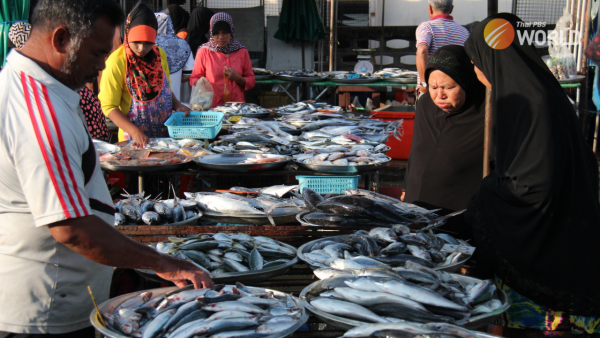
Part of the lost kingdom of Patani, Narathiwat was also a travel hotspot on the Maritime Silk Route. It attracted traders, priests, and explorers from all over the world in search of fortune, adventure and romance. The coastal province has become more ethnically diverse over the years with a Chinese shrine, a Muslim mosque, and a Buddhist temple representing the faiths of its residents.
A stop at the Wadil-Husen Mosque is a must.
Also known as the “300 Years Old Mosque”, the Wadil-Husen Mosque was built around 1624 and still calls Muslims to prayer. Made entirely of ironwood, the mosque combines several architectural styles from the Chinese, Thais, and Malays. With its fine carvings, entrance steps, carved wooden doors and windows, calligraphy and decoration, the quality of workmanship is among the best found in Narathiwat.
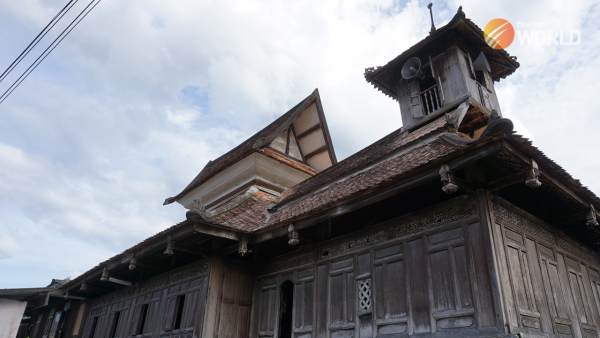
If you’re left feeling inspired after a visit to the Wadil-Husen Mosque, the Islam Heritage Museum and Quran Learning Centre should be next on your list. About a 15-minute drive from the historic mosque, the museum is home to a great collection of old Quranic and Arabic manuscripts. Some of the Quran texts are hand-written on parchment; others are written on papyrus. The Qurans here range in age from 600 to 1000 years, and you’ll be surprised to discover that they were brought from every part of the world where the teachings of Islam were recited, Malay Nusandara, India, Persia, Egypt, Yemen, Spain, Morocco and Uzbekistan among them.
Narathiwat is blessed with a straight and abundant shoreline and idyllic beaches – where goats and villagers have a fair share of the empty golden sandy strip. The province grew out of a fishing village, and coastal fishing is still very healthy and strong, supplying the freshest fish to Narathiwat kitchens and restaurants. Every now and then, you’ll see children enthralled and excited as a kolae, a traditional and colourful fishing boat, approaches the beach.
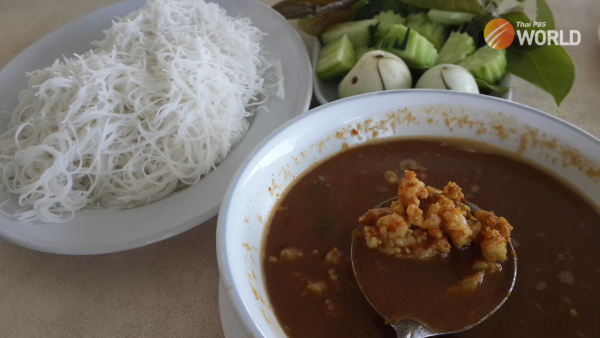
The best place to find the best fish and inspiration is the Narathiwat Municipal Market, where local fishmongers ply their trade for the catches of the day. It’s a pleasant place to stroll through, with small alleys selling locally grown and farmed produce. You’ll be delighted to learn about local fruits, vegetables, meat, and fish, as well as what’s in season and what to order at local restaurants.
Many restaurants are nestled along the bank of the Bang Nara River in downtown Narathiwat. Authentic southern dishes such as gaeng som pla (sour and spicy yellow curry), stinky beans and shrimp and chicken stew in turmeric soup are popular items on the menu.
At Rim Nam restaurant, Seafood Ho Mok (steamed seafood curry) and many fish dishes are prepared in Thai and Halal kitchens. Those who crave chicken dishes and deep-fried fish with sensational salad on top, should head to Mangkorntong – the finest Chinese restaurant in town. If you’re out of town to visit Wat Chon Thara Singhe in Tak Bai, book a table for lunch at Nat Phop Yung Thong restaurant and treat yourself to the most delicious southern food in Narathiwat. Don’t forget to order salted threadfin dish – Narathiwat’s delicacy.

Where do the locals in Narathiwat head for a walk in the woods? Located about 26 kilometres south of Narathiwat’s town centre, the Sirindhorn Peat Swamp Forest is home to 66,000 acres of peatland with high biodiversity. It’s a safe haven for many species of mammals, birds, fish and amphibians as well as a source of fish for the surrounding communities. You don’t have to be a microbiologist or a forager to appreciate this peatland. Boardwalks wind their way across the water from the visitor centre to the heart of the evergreen forest, where beauty, mystery, and serenity coexist.
If you go
Thai AirAsia operates flights between Bangkok (Don Mueang) and Narathiwat.
By Thai PBS World Feature Desk



